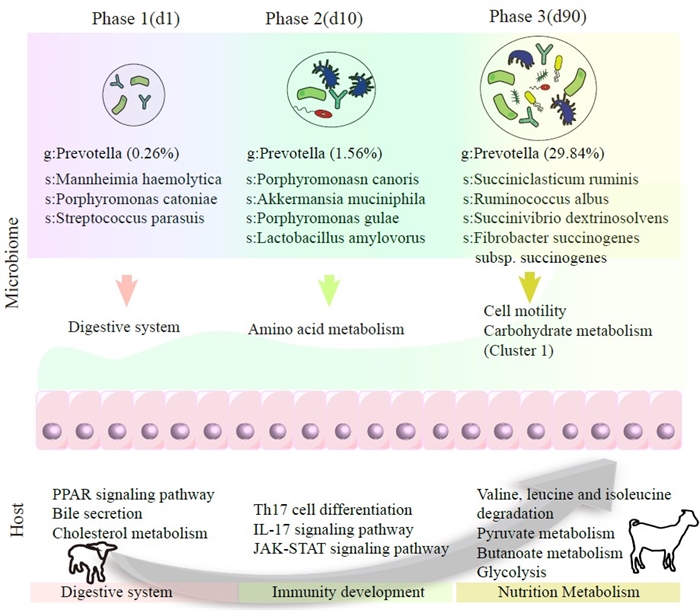A new study led by Prof. TAN Zhiliang from the Institute of Subtropical Agriculture of the Chinese Academy of Sciences has unveiled intricate coordination mechanisms between ruminal mucosal microbiota and host epithelial cells across developmental stages.
This study, published in SCIENCE CHINA-Life Sciences on February 11, could pave the way for increasing livestock survival and productivity through targeted microbiome stewardship during critical windows.
As the digestive epicenter of ruminants, the rumen achieves efficient bioconversion of lignocellulosic substrates through intricately orchestrated microbe-host collaborations. Mucosal-adherent microbiota, via direct crosstalk with host epithelial interfaces, serve as key regulators of nutrient flux and immune homeostasis.
By integrating multi-omics profiling (transcriptomic sequencing, 16S rRNA amplicon analysis) and interaction network modeling, the study systematically deciphers stage-resolved co-development paradigms spanning postnatal days 1-90. The mucosal microbiota undergoes phase-specific restructuring-neonatal phase is dominated by opportunistic pathobionts (Mannheimia, 39.7%), the transitional phase witnesses a proliferation of mucolytic specialists (Akkermansia muciniphila, 21.4%), culminating in fibrolytic specialists (Succiniclasticum ruminis, 58.3%) by mature phase.
In addition, the host mucosa exhibits hierarchical functional remodeling-early phase activates innate immune defense genes, mid-phase reinforces mucin biosynthesis and JAK-STAT-driven redox regulation, while late phase establishes a nutrient conversion network governed by metabolic regulators.
Furthermore, cross-kingdom interplay demonstrates temporal regulatory shifts, with early phase emphasizing digestive and immune development and later phase focusing on enhanced nutrient metabolism.
Taken together, the dynamic synchronization between mucosal microbiota and host ontogeny orchestrated the ecological maturation of the rumen during its formative developmental window.
"This study elucidates the ontogenetic choreography between rumen mucosal microbiomes and host developmental trajectories in a stage-specific manner," said Prof. ZHOU Chuanshe, corresponding author of the study.
These findings redefine ruminant gastrointestinal maturation as a bidirectional developmental cascade in which early microbial succession not only programs host immunity, but is reciprocally shaped by epithelial transcriptomic adaptations-a paradigm shift for optimizing livestock productivity through targeted microbiome stewardship during critical windows.

Co-developmental dynamics between microbiota and host (Imaged by WU Jian)






